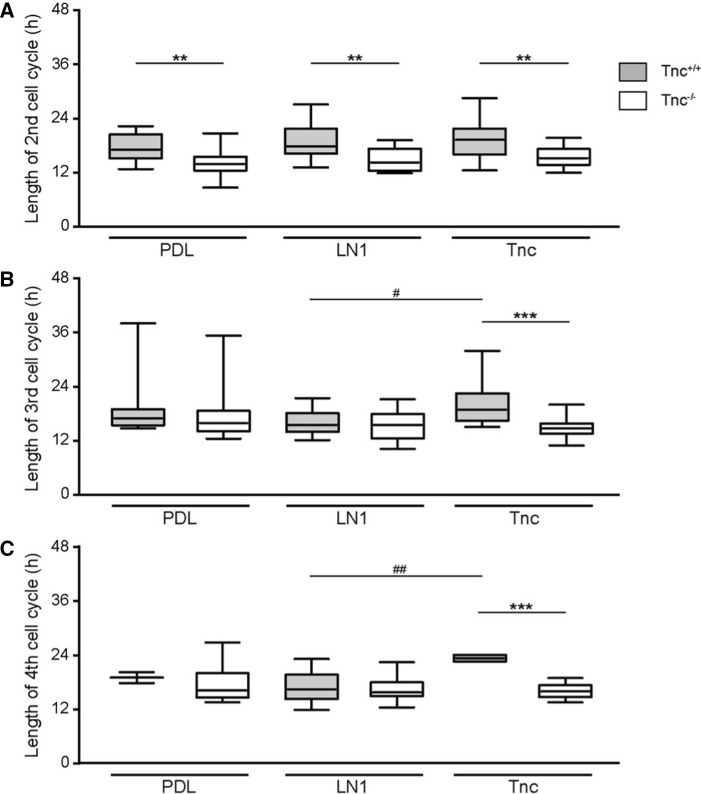Fig. 5.
Cell cycle lengths of the wild type and Tnc-knockout subset of slow-dividing aNSPClate. a–c Cell cycle lengths of late-dividing wild type (gray) and knockout aNSPClate (white) are presented in box-whisker-plots with 5–95% percentiles from the 2nd (a), 3rd (b) and 4th (c) generation (N = 5, n = 2–37). a In the 2nd generation, the cell cycle length was reduced in Tnc-deficient cells in the control, on LN1 and on Tnc substrates compared to their wild type counterpart. b Exposure to Tnc as substrate led to a significantly elongated cell cycle in the 3rd generation of wild type cells compared to the LN1 substrate. c This effect was maintained up to the 4th generation, which underscored the opposite effect of the Tnc substrate on the slow-dividing subset of aNSPClate in comparison to the majority of the proliferative population. In Tnc-deficient aNSPClate, we could not detect differences between the different substrate conditions in any generation. Extensive information concerning the number of analyzed cells is presented in supplementary table S3. Statistical evaluation was conducted using the Kruskal–Wallis test with Dunn’s multiple comparison for comparing substrates (*p < 0.05, **p < 0.01). The Mann–Whitney U tests were performed to analyze differences between wild type and knockout data (**p < 0.01, ***p < 0.001)

